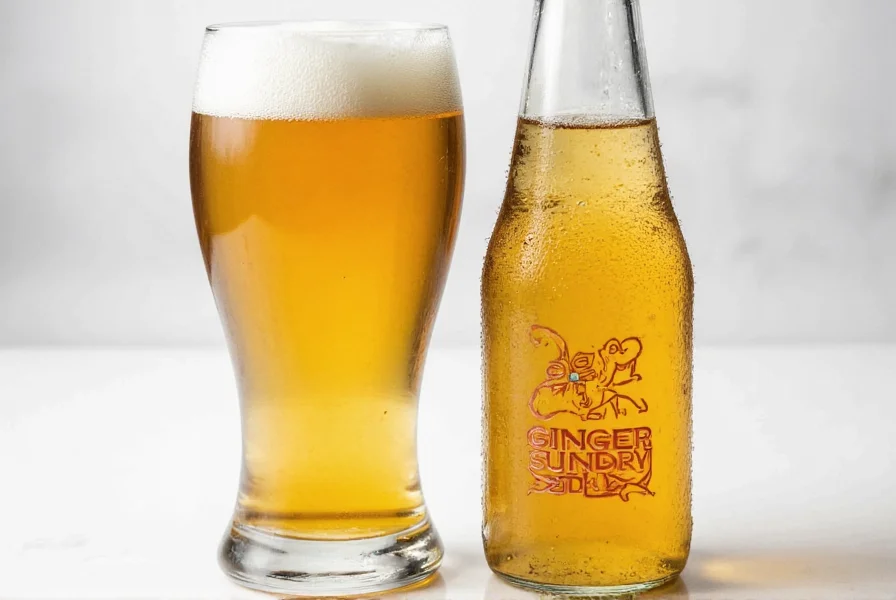When exploring the question is ginger beer the same as ginger ale, many consumers find themselves confused by these similarly named beverages. Despite their shared ginger foundation, these drinks have distinct characteristics that set them apart in both historical context and modern production.
Historical Origins: Two Different Paths
Ginger beer traces its roots to 18th century England, where it was originally brewed through natural fermentation of ginger, sugar, water, and a symbiotic culture of yeast and bacteria known as the "ginger beer plant." This traditional method produced a mildly alcoholic beverage (typically 2-11% ABV) with complex flavors developed during the fermentation process.
Ginger ale, by contrast, emerged in mid-19th century Canada and Ireland as a non-alcoholic carbonated beverage. It was created as a milder alternative to ginger beer, specifically designed to appeal to those who found traditional ginger beer too spicy or intense. The Canadian version (often called "dry" or "golden" ginger ale) tends to be more robust, while the Irish style is typically lighter and sweeter.
Production Methods: Fermentation vs. Carbonation
The fundamental difference between ginger beer vs ginger ale production lies in their manufacturing processes:
| Characteristic | Ginger Beer | Ginger Ale |
|---|---|---|
| Primary Method | Fermentation (traditionally) | Carbonation of flavored syrup |
| Alcohol Content | Traditionally alcoholic (now mostly 0.5% or less) | Non-alcoholic (0% ABV) |
| Ginger Form | Fresh ginger root | Ginger extract or flavoring |
| Flavor Profile | Bolder, spicier, more complex | Milder, sweeter, simpler |
| Carbonation | Natural from fermentation | Artificially added |
Modern commercial ginger beer typically skips the fermentation process for efficiency, instead using fresh ginger to create a stronger flavor profile without alcohol. This has blurred the lines somewhat, but the flavor distinction remains clear.
Taste Comparison: Spice Level and Complexity
When evaluating ginger beer vs ginger ale taste, the most noticeable difference is intensity. Authentic ginger beer delivers a pronounced ginger "bite" with warming spice notes and often a slight tartness from the fermentation process. The ginger flavor is more complex and multi-dimensional.
Ginger ale, particularly the mainstream American varieties, offers a much milder ginger experience—often described as "ginger-flavored soda" rather than a true ginger beverage. The ginger flavor is subtle, with prominent sweetness that masks much of the characteristic ginger heat.
For those wondering which is spicier ginger beer or ginger ale, the answer is consistently ginger beer. This spiciness makes it the preferred choice for cocktails like the Moscow Mule, where its robust flavor can stand up to strong spirits.
Alcohol Content Clarification
One common point of confusion is whether ginger beer is alcoholic. Historically, yes—traditional ginger beer contained alcohol from fermentation. However, nearly all commercially available ginger beer today in the United States and many other countries contains less than 0.5% alcohol by volume, legally classifying it as non-alcoholic. Always check the label if alcohol content is a concern, as some craft varieties may contain slightly higher levels.
Modern Varieties and Brand Differences
When shopping for these beverages, understanding ginger beer ingredients vs ginger ale can help you select the right product:
- Traditional ginger beers (like Fentimans, Bundaberg, Q Mixers): Use real ginger root, often with additional botanicals, resulting in deeper flavor complexity
- Modern craft ginger beers: May use fermentation for authentic flavor while maintaining non-alcoholic status
- Golden/dry ginger ales (like Canada Dry, Fever-Tree): Offer moderate ginger flavor with noticeable spice
- Standard ginger ales (like Seagram's, Schweppes): Feature very mild ginger flavor with dominant sweetness

Practical Applications: When to Use Each
Understanding the difference between ginger beer and ginger ale helps determine which to use in various situations:
- Cocktails: Ginger beer works best in Moscow Mules and Dark and Stormys where bold ginger flavor is desired; ginger ale suits lighter cocktails like Whiskey Highballs
- Settling stomachs: Traditional ginger beer (with real ginger) may provide more digestive benefits due to higher gingerol content
- Cooking: Ginger beer adds complexity to marinades and glazes; ginger ale works better in sweet applications like cakes
- Non-alcoholic alternatives: Both serve as refreshing standalone beverages, with ginger beer offering more complexity for discerning palates
Common Misconceptions
Several myths persist about these beverages that contribute to the confusion around what is the difference in ginger ale and ginger beer:
- Myth: "Ginger beer contains alcohol while ginger ale doesn't" → Reality: Most commercial versions of both are non-alcoholic
- Myth: "The terms are interchangeable" → Reality: They represent distinct beverage categories with different flavor profiles
- Myth: "All ginger beers are spicy" → Reality: Some modern commercial versions have been sweetened and mellowed to appeal to broader audiences
- Myth: "Ginger ale is just watered-down ginger beer" → Reality: They're made through completely different production methods
Choosing the Right Beverage for Your Needs
When deciding between these options, consider what you're looking for in terms of best ginger beer for mules or general consumption:
- Choose ginger beer when you want: Bold ginger flavor, noticeable spice, complex taste profile, traditional preparation
- Choose ginger ale when you prefer: Milder ginger presence, sweeter profile, simpler flavor, wider availability
Reading labels carefully helps identify products that use real ginger versus those relying on artificial flavorings—a key factor in determining authentic flavor regardless of whether it's labeled as beer or ale.










 浙公网安备
33010002000092号
浙公网安备
33010002000092号 浙B2-20120091-4
浙B2-20120091-4